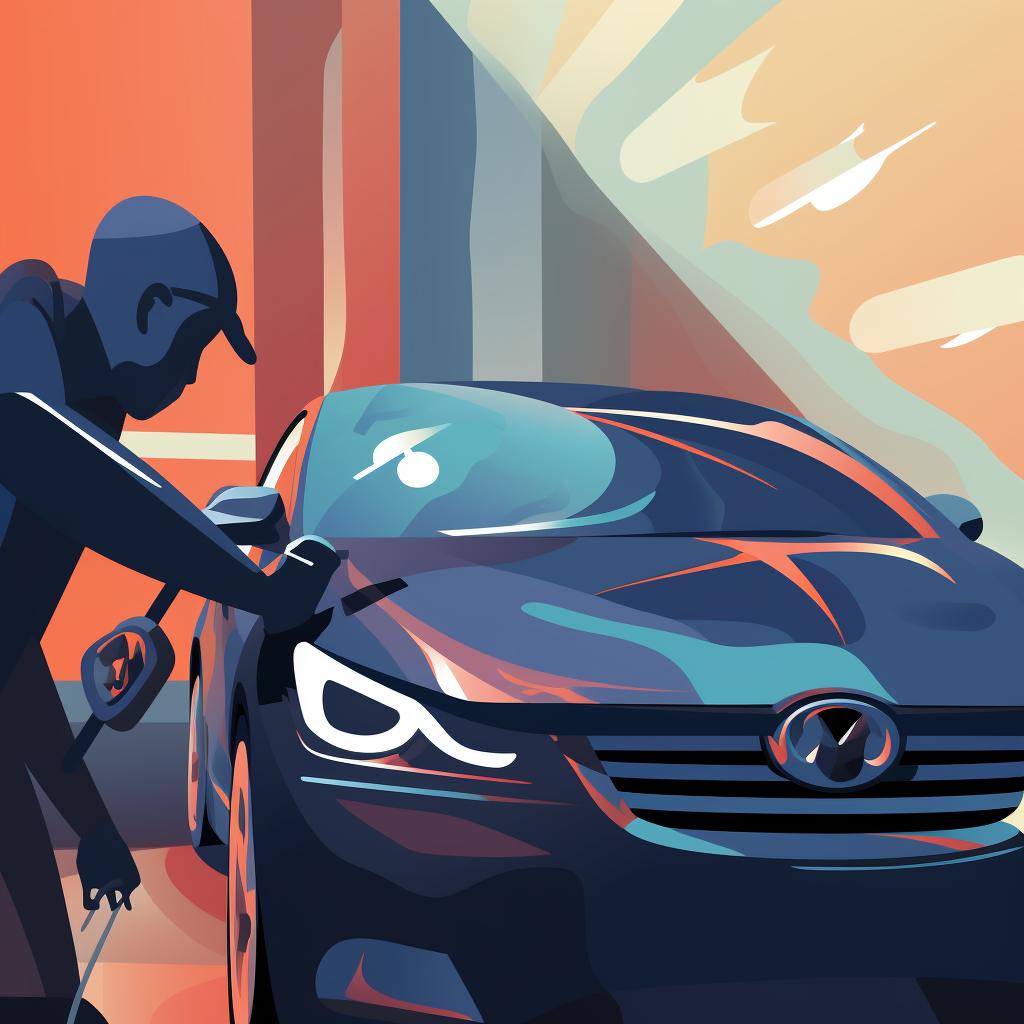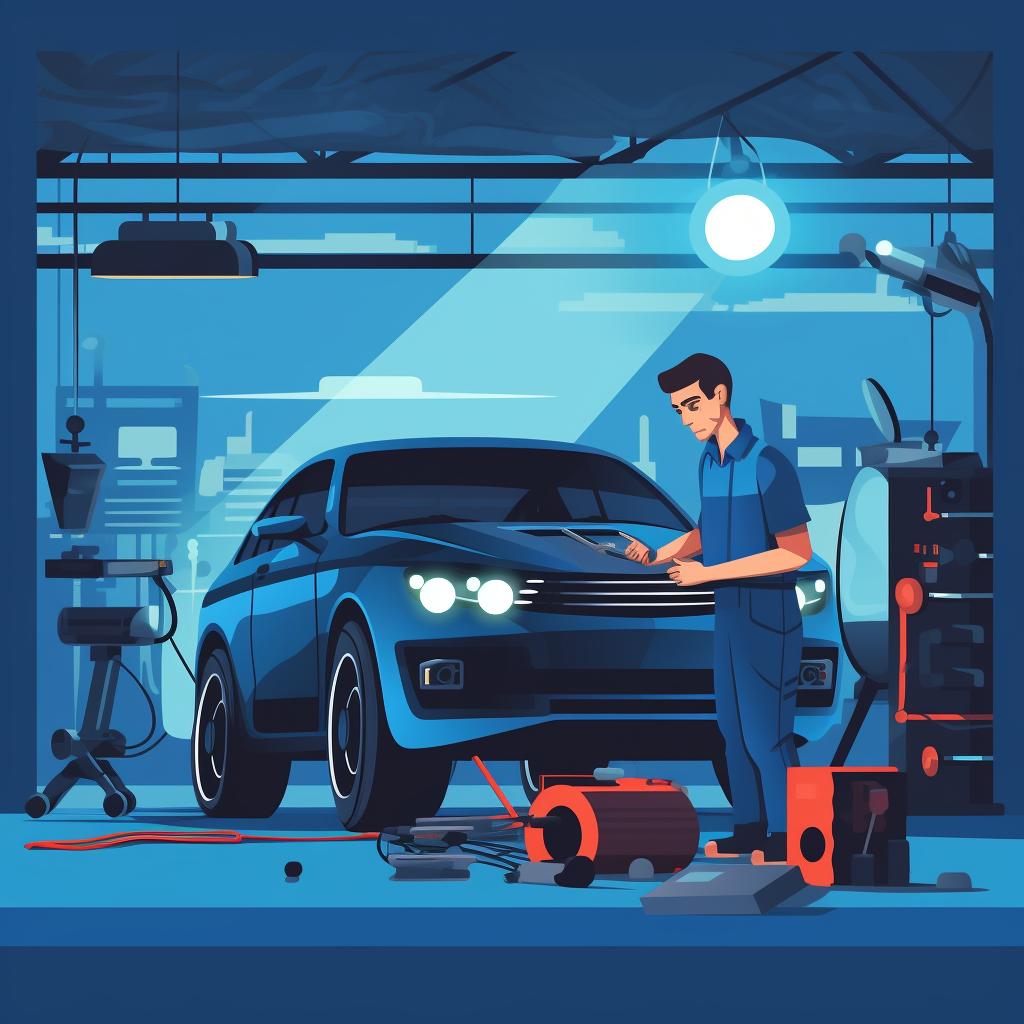Victoria is a seasoned journalist with a unique focus on automotive journalism. With a rich history of covering diverse automotive occasions and interviewing industry-leading experts, she brings a wealth of knowledge to every piece. Victoria is dedicated to enlightening readers on the most recent trends and advancements in the automotive sector.
Blind spot monitors and rear cross traffic alerts are essential safety features in modern cars. Proper maintenance and care are crucial to ensuring they function correctly. Let's explore how to keep these systems in top shape.
Keeping Your Blind Spot Monitor in Top Shape: A How-To Guide
Blind spot monitors use sensors to detect vehicles in areas that might not be visible in your side mirrors. To keep these sensors working correctly, follow these steps:
To ensure the longevity and effectiveness of your blind spot monitors, it's crucial to follow a regular maintenance routine. Here are the steps you need to take:
Learn more about 🚗 Maintaining Your Blind Spot Monitors: A Step-By-Step Guide 🛠️ or discover other Driver Pals guides.
Following these steps will ensure your blind spot monitors continue to function accurately and effectively, keeping you safer on the road.
Regularly clean the sensors. Dirt and debris can interfere with the sensor's ability to detect vehicles accurately.
Avoid painting over the sensors. If you're getting your car repainted, ensure the paint doesn't cover the sensors as this can affect their functionality.
Check for sensor damage. If your car has been in an accident or hit something, have a professional examine the sensors to ensure they're still working correctly.
Have the sensors calibrated by a professional if you notice they're not detecting vehicles as they should.
Learn more about maintaining optimal functionality of car sensors in varying weather conditions.
Check out our step-by-step guide on calibrating your vehicle's safety systems.
Rear Cross Traffic Alert 101: Care and Maintenance Tips
Rear cross traffic alerts warn you of approaching vehicles when you're backing out of a parking space. To maintain this system:
Rear cross traffic alerts are invaluable in ensuring your safety while driving. However, to ensure their effectiveness, proper maintenance is necessary. Here's a step-by-step guide on how to maintain your rear cross traffic alerts:
Learn more about 🚗 Maintaining Your Rear Cross Traffic Alerts: A Step-by-Step Guide 🛠️ or discover other Driver Pals guides.
By following these steps, you can ensure that your rear cross traffic alerts continue to function effectively, keeping you safe on the road. Remember, regular maintenance is key to the longevity and effectiveness of these systems.
Keep the sensors clean. Like blind spot monitors, these sensors can be affected by dirt and debris. Check out our step-by-step guide on maintaining your vehicle's sensors for more information.
Check the sensors after accidents. Even a minor bump can misalign a sensor or damage it. Learn about the main factors that can affect the accuracy of blind spot monitors and rear cross-traffic alerts in our article.
Don't install aftermarket accessories near the sensors. These can interfere with the sensor's range and accuracy. For tips on maintaining optimal functionality of car sensors in varying weather conditions, check out our guide.
Extra Care Tips: Keeping Your Car Safety Features Running Smoothly
Here are some additional tips to help maintain the effectiveness of these safety features:
...Always refer to the vehicle's manual for specific care instructions.
...Regularly check the system's functionality to ensure that it's working properly.
- Keep the sensors clean. Accumulated dirt and debris can interfere with their performance.
- Do not paint over the sensors. This can hinder their ability to detect vehicles accurately.
- Check the sensors after any accident, even a minor one, as they could have been damaged.
- Avoid installing accessories near the sensors, as they can obstruct the sensor's field of view.
- Get your car's safety systems checked by a professional during routine maintenance.
- If you notice any irregularities or malfunctions, seek professional help immediately.
Always refer to the vehicle's manual for specific care instructions.
Regularly check the system's functionality to ensure it's working as it should.
If a system isn't functioning correctly, have it checked by a professional as soon as possible.
Avoid DIY repairs. These systems are complex and should only be repaired by a professional.
Keep your car's software updated. Manufacturers often release updates that improve the functionality of safety systems.
For more information on mastering your vehicle's safety features, check out our step-by-step guide.
To learn about calibrating your vehicle's safety systems, read our step-by-step guide.
For essential tips on preventing accidents through car maintenance, visit The Connection Between Car Maintenance and Safe Driving: Essential Tips for Preventing Accidents.
Now that we've covered the basics of maintaining your car's safety features, let's address some common questions you might have.
Remember, regular maintenance is key to ensuring the effectiveness of your car's safety features. Don't hesitate to consult your vehicle's manual or a professional if you have any doubts.
I hope this guide provides some clarity on maintaining these crucial safety features. Remember, your vehicle's manual is an excellent resource for specific care instructions. Safe driving!
How often should I clean the sensors?
Can I turn off these safety features?
What should I do if a safety feature isn't working?
Now that we've answered some common questions, let's move on to our handy checklist. This will help you keep your blind spot monitors and rear cross traffic alerts in top shape.
Keeping up with this checklist will ensure your safety features function properly, helping you stay safe on the road. Remember, regular maintenance is key!
- Check sensors after accidents
- Don't install accessories near sensors
- Refer to vehicle manual for specific instructions
- Regularly check system functionality
- Have non-functioning systems checked by a professional
- Keep car software updated























